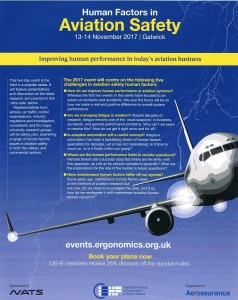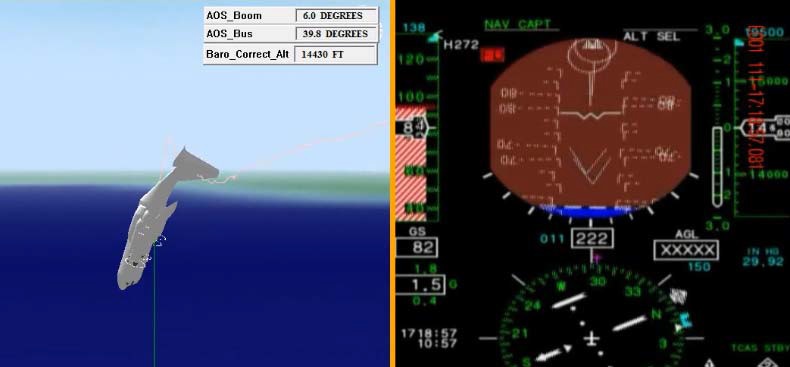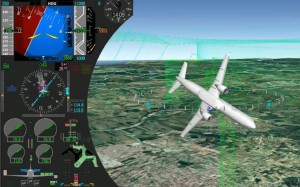AC-130J Prototype Written-Off After Flight Test LOC-I Overstress
The prototype US Air Force (USAF) AC-130J Ghostrider, 09-5710, has been declared a total loss after the airframe was “severely overstressed” after a Loss of Control – Inflight (LOC-I) during a flight test from Eglin AFB, Florida on 21 April 2015. Loss of the aircraft is estimated at $115.6 million.
The Occurrence
The aircraft “exceeded its design limit load to an extent that rendered it unsafe for flight and is considered a total loss to the Air Force” during a “medium risk” test sortie according to Air Force Materiel Command‘s Accident Investigation Board report:
The incident occurred while the crew from the 413 Flight Test Squadron at Eglin was performing steady heading sideslips at an altitude of approximately 15,000 feet. The aircraft exceeded the targeted angle of sideslip until it departed controlled flight and momentarily inverted before being recovered after losing approximately 5,000 feet of altitude. The aircraft returned to base and landed safely without further incident.
The aircraft pulled 3.19 G and oversped the maximum flap airspeed by 100 knots during the event.
The Investigation
The report notes that:
The Threat Hazard Analysis Worksheet (THAW) and the test cards emphasis for recovery from departures was weighted toward stalls as opposed to sideslip, based on the cautions, warnings, and recovery procedures mentioned.
This might be explained by a previous LOC-I during stall testing (see below). Furthermore, data from Lockheed Martin sideslip trials with the unmodified C-130J were not available to the team as the USAF had failed to put a contract in place.
It was also not clearly stated in manuals that the Head Up Display (HUD) indication of sideslip freezes and does not increase once a warning level is reached.
The President of the Accident Investigation Board concluded:
I find, by a preponderance of the evidence, the cause of this mishap was the [Mishap Pilot’s] MP’s excessive rudder input during the test point followed by inadequate rudder input to initiate a timely recovery from high angle of sideslip due to Overcontrolled/Undercontrolled Aircraft and Wrong Choice of Action During an Operation.
Additionally, I find, by a preponderance of the evidence, Instrumentation and Warning System Issues, Spatial Disorientation, Confusion and the fact the test team was Provided Inadequate Procedural Guidance or Publications were factors that substantially contributed to the mishap.
The report also states:
Due to the nature of the acquisition process and the parties involved, there appeared to be poorly defined and/or confusing lines of communication and organizational priorities.
Although the President of the Board did not consider it causal or contributory he does comment on the fact that:
The squadron’s technical director first removed himself from reviewing any test cards in the unit and then rescinded his signature from the [method of test] MOT.
The report goes on:
We wondered if the technical director’s actions were symptomatic of safety concerns that were not being respected by other unit leadership. Why would anyone remove their signature from the MOT if he/she felt the procedures were sound. We found no substantial evidence to suggest he was concerned for the safety of the flying qualities test activities. He stated “No changes need to be made to the existing documentation.”
The board debated the significance of the situation, and was left with the impression it was a personality issue for the unit and possibly related to tension between the [Lead Developmental Test Organization] LDTO [USSOCOM DET 1] regarding test execution. In our final analysis, I could not ascribe this as a substantially contributing factor but felt it was significant enough to warrant discussion.
Previous LOC-I
The aircraft, serial number 09-5710, also suffered a similar incident in February [2014], and has been grounded since the April mishap. A second AC-130J prototype was delivered to commence operational testing at nearby Hurlburt Field, Fla., in July.
In the 25 February 2014 incident the aircraft experienced a departure from controlled flight during stall testing. In that case it was recovered after an approximately 4,000 feet loss of altitude.
UPDATE 17 November 2015: Flight International briefly covered this story today.
Another High Value USAF Accident
We have previously reported on a April 2015 fire on an RC-135V that caused over $60 million of damage: USAF RC-135V Rivet Joint Oxygen Fire
Other Safety Resources
- Breaking the Chain: X-31 Lessons Learned
- Fatigued Flight Test Crew Crosswind Accident
- Maintenance Check Flights: Safety Lessons
- ANSV Issue AW609 Tilt Rotor Accident Investigation Update
- Bell 525 Prototype N525TA Fatal Flight Test Accident
- UPDATE 20 August 2017: 1980 MD-81 Flight Test Accident Video
- UPDATE 13 November 2018: Inadequate Maintenance, An Engine Failure and Mishandling: Crash of a USAF WC-130H
- UPDATE 27 December 2018: Inadequate Maintenance at a USAF Depot Featured in Fatal USMC KC-130T Accident
- UPDATE 26 January 2019: MC-12W Loss of Control Orbiting Over Afghanistan: Lessons in Training and Urgent Operational Requirements
- UPDATE 30 October 2019: ‘Crazy’ KC-10 Boom Loss: Informal Maintenance Shift Handovers and Skipped Tasks
- UPDATE 25 April 2021: A Second from Disaster: RNoAF C-130J Near CFIT
UPDATE 31 May 2019: The Portuguese accident investigation agency, GPIAAF, issued a safety investigation update on a serious in-flight loss of control incident involving Air Astana Embraer ERJ-190 P4-KCJ that occurred on 11 November 2018. The aircraft was landed safely after considerable difficulty, so much so the crew had debated ditching offshore. GPIAAF conformed that incorrect ailerons control cable system installation had occurred in both wings during a maintenance check conducted in Portugal.
GPIAFF note that: “By introducing the modification iaw Service Bulletin 190-57-0038 during the maintenance activities, there was no longer the cable routing and separation around rib 21, making it harder to understand the maintenance instructions, with recognized opportunities for improvement in the maintenance actions interpretation”. They also comment that: “The message “FLT CTRL NO DISPATCH” was generated during the maintenance activities, which in turn originated additional troubleshooting activities by the maintenance service provider, supported by the aircraft manufacturer. These activities, which lasted for 11 days, did not identify the ailerons’ cables reversal, nor was this correlated to the “FLT CTRL NO DISPATCH” message.”
GPIAFF comment “deviations to the internal procedures” occurred within the maintenance organisation that “led to the error not being detected in the various safety barriers designed” in the process. They also note that the error ” was not identified in the aircraft operational checks (flight controls check) by the operator’s crew.”
UPDATE 1 June 2019: Our analysis: ERJ-190 Flying Control Rigging Error
Aerossurance is pleased to be supporting the annual Chartered Institute of Ergonomics & Human Factors’ (CIEHF) Human Factors in Aviation Safety Conference for the third year running. This year the conference takes place 13 to 14 November 2017 at the Hilton London Gatwick Airport, UK with the theme: How do we improve human performance in today’s aviation business?



Recent Comments